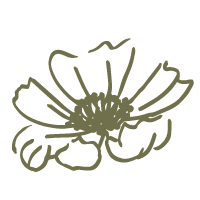1. Go to the Studio
If you are lucky enough to have studio space go there, use it, be in the environment. Tutors are there to look at your work, they are there to help and guide, and they can't help with anything if you're never there. I noticed significantly that the students who were always around were the ones who made better work, got better results and have cooler jobs as a result.
2. Sign up for tutorials / Go to your tutorials
I know that the idea of sitting around a table with some veritable strangers to present whatever the hell you did over the past week, in the early morning with a hangover sounds like the worst thing imaginable, but please go to your tutorials. You paid lots and lots of student loan money for them. Even if you feel like the work you did is crap, or you didn't do enough, please go. Your tutors are full of great ideas, and so are your peers and my tutorials always left me coming away with loads of great new directions to try and renewed enthusiasm for my projects.
3. Try out styles/directions in your 1st and 2nd Year
These are the years to play and discover yourself and your style! I knew absolutely nothing entering uni, and it took about 2 and 3/4 years for me to feel like anything I had made was remotely good. Use the first two years of your uni experience to play with different styles and medias and discover what you like and your strenghts. Don't be afraid of software you don't understand, or mediums you've never used. Play with screen printing. lino, illustration, video, Adobe Suite!
4. Actually Submit to the Competitions
There's no doubt that if you are on an Art course, you'll be set briefs based around university competitions. Be sure to do the work to submit your projects, even if you hate them. Yes, it's easy to feel the extra effort to put all your work into slides and submit them is pointless, especially when you're not feeling whatever it is you made, but it takes so little time, teaches you to present your work coherently and you might just win after all.
5. Sit with New People
Remember earlier I told you to go to the studio? Well, make sure you sit with new people and talk to them. For a shy and weird introvert like me this was absolute terror, so I didn't do much of it, but as a result I had almost no friends on my course until very late on in my first year. Something I wished I had done more of was make more friends amongst the course, so I'm passing this tip on to you.
6. Ask for Help and Feedback
This is what your tutors are paid for, and technicians. Use your 3 years to soak up all the knowledge you can because it is so much harder to figure stuff out after you've left the safety of the studio. Don't be afraid to ask the print studio technicians for help, or the bored looking tutor for their feedback on your work, even if they're not your tutor. It's so so worth it.
7. Don't Stress Over Your Dissertation
You're an artist. No employer cares what you wrote about the influence of the Bauhaus on modern packaging design. They care about what cool stuff you made. Sit down, get it done, and then move on to the making.
8. Make Stuff You Want to Make, Not What You Think You Should
So many times I see people worrying about whether their projects are the "right project" to get them a 1st Class Honours - they look to tutors to tell them if their projects are the "right" projects to suit design studios, without thinking about whether it is a project they will enjoy, or will feel proud of. I eventually learned that there is no point dishing out the kind of student loan fees we do on a portfolio we're not proud of, or doesn't excite us. Make the work you'll be excited to share in interviews, and work that feels meaningful to you.
9. Think How You Can Apply Your Ideas To Life
Speaking of portfolios - here's a thing that I think crops up a lot especially for Illustrators. I think a lot of employers want to see how your creations work in the world. A nice drawing on a piece of paper is all well and good, but mostly as designers we will create designs for other things. If you want to be an editorial illustrator - put together an illustrated magazine full of work. If you're a surface pattern designer, make a collection of homewares, rather than prints on a page. If you want to be a children's illustrator - write a childrens book.
10. Practice Presenting Your Work, Lots
Take every opportunity to present your work. Good universities will give you chances to present your portfolios and projects to design studios, agents and other designers. Don't skip these. Every time you do it, it gets a little less terrifying, and you never know when your work will become something memorable for someone important.
11. Do the Work
Those who did the best work, put the work in. Go the extra mile wherever you can - rather than designing a page or two of a recipe book, make the whole thing. And get it printed and bound beautifully wherever you can afford. Spend time experimenting and exploring different routes. It will make your work better, and your portfolio stand out more.
12. Stop Worrying About Getting a 1st
I've never onced been asked what I got, and neither will you. What work you do matters a lot more than what grade you get, and in my experience your grade is a lot more about the volume of experimentation you do, and how well you document and evidence this work.




